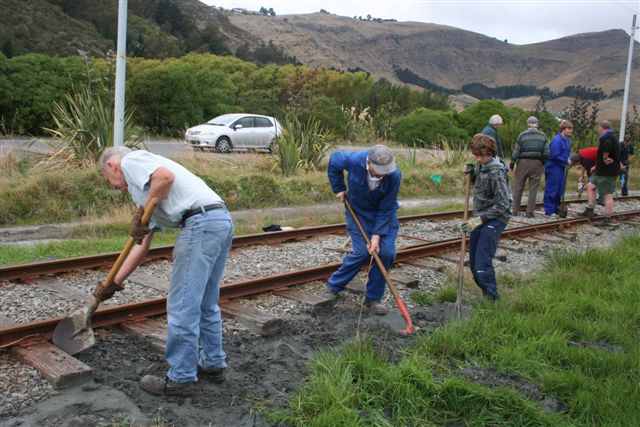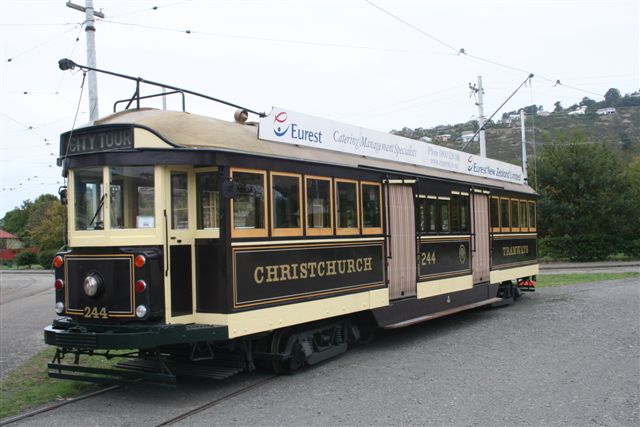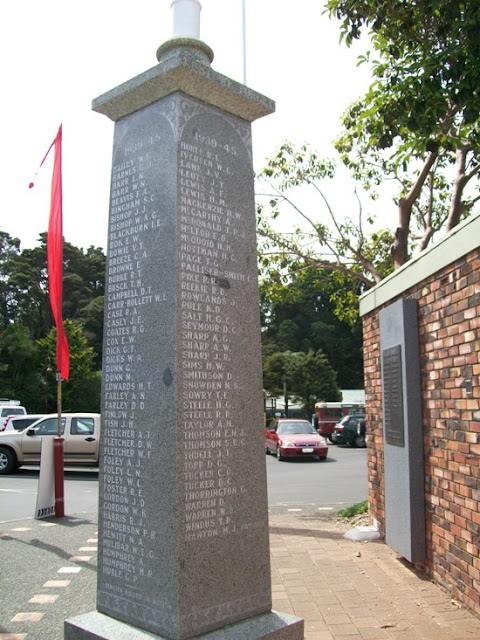Once again, some images from Bryan Blanchard, with his permission.
"... Christchurch in happier days. All in the Square, except 244 coming out into the street at the east end of the square."
Update 29 March 2011: More pre-quake photos from Bryan, taken at Cathedral Junction at the east end of the square, 7 February 2009.
No. 178 (all above): " a boon tram, this class were introduced in 1921". Below, the ex-Melbourne W2 244.
Tram 11 & trailer.
Trailer & tram 178 in the distance.
Tram 178. Bryan's comment: "When I rode on the trams as a school boy up on holiday from Timaru - I rode
on trams like 178, painted green & yellow from Spreydon shopping shops into the square route numbers on trams were 14 to Spreydon & 16 to St Albans. Cost to the square from Spreydon was one penny.
"178 painted red, was a trial colour done in the 1930s on one or two."
on trams like 178, painted green & yellow from Spreydon shopping shops into the square route numbers on trams were 14 to Spreydon & 16 to St Albans. Cost to the square from Spreydon was one penny.
"178 painted red, was a trial colour done in the 1930s on one or two."
Tram 244.




















































